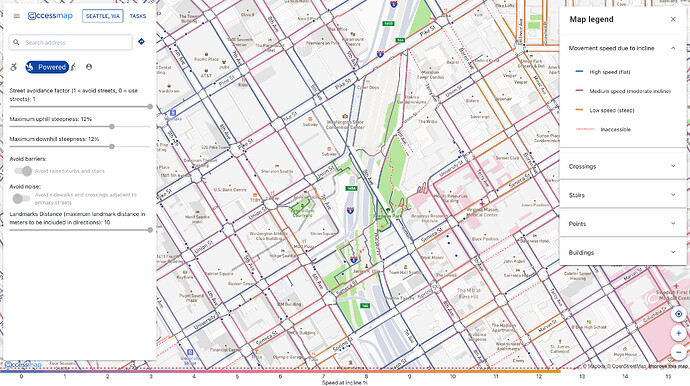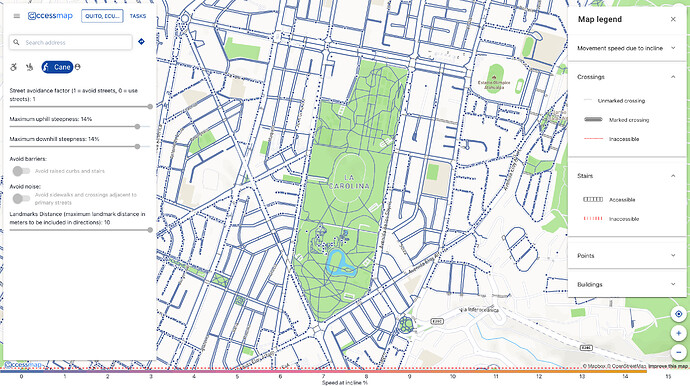Rest assured, I am proposing no such thing. Routers will route over whatever achieves the best result, for some definition of “best” that suits their audience and use case. There isn’t only one right answer. In order to accommodate a diverse array of data consumers, some tags need to form an answer to the question “What is it?” with a degree of certainty.
To reiterate, a sidewalk is not merely an abstract legal concept, but rather a real-world object that some data consumers need to distinguish reliably. It is only by coincidence that American English has a convenient word for this concept, so that’s what we used instead of footway or pavement. The law has little to do with it.
Maybe you followed my earlier link and discovered that California, too, officially defines “street” to include the entire street right of way, via the Tree Planting Act of 1931:
“Street” means all or any portion of territory within a city set apart and designated for the use of the public as a thoroughfare for travel, and includes the sidewalks, the center and the side plots thereof.
Fortunately, the act’s authors were wise enough to limit the law’s application to certain activities that the government has an interest in:
This part provides an alternative system for the planting, maintaining or removing of trees in cities, and the provisions of this part shall not apply to or affect any other provisions of this code.
I’m even less qualified to interpret Austrian law than American law, but I couldn’t help but notice the preface to the list of definitions in the Austrian StVO:
Im Sinne dieses Bundesgesetzes gilt als
[Within the meaning of this Federal Act]
In other words, your government graciously permits you to utter the word Gehsteig in connection with sidewalks, without applying this word to everything the StVO would call Gehsteig and even some things the StVO would call a Gehweg. You could even surround it in „quotation marks“ for dramatic effect, as I often do with the weird term “trunk road”. But if this is too counterintuitive, you could coin a different word for the concept of a street’s physically separated accessory walkway. German has a prodigious ability to form new compound words.
Every language community in OSM has had to navigate a semantic minefield in order to craft a usable tagging scheme. For example, in English, we eventually settled on “traffic park” as the best alternative to a circumlocution so long that @Mateusz_Konieczny could’ve copyrighted it. But you don’t see anyone campaigning to move the tag to leisure=park park=traffic. Everyone knows what a “zebra crossing” is, right? In the U.S., a zebra crossing is officially defined as having slanted bars, or else it isn’t a zebra crossing. Yet we have acquiesced to a definition of crossing:markings=zebra that specifies straight bars for the benefit of Europeans. You’re welcome!
Is it really the case that your fellow mappers are so dependent on pronouncements of law that you wait to hear back from the local authority before deciding whether to map something as a separate way? How is that degree of deference beneficial to OSM? Can I be sure I’m debating against a sincere local consensus, the result of trying and failing to bridge the language divide through user education or better software localization?

